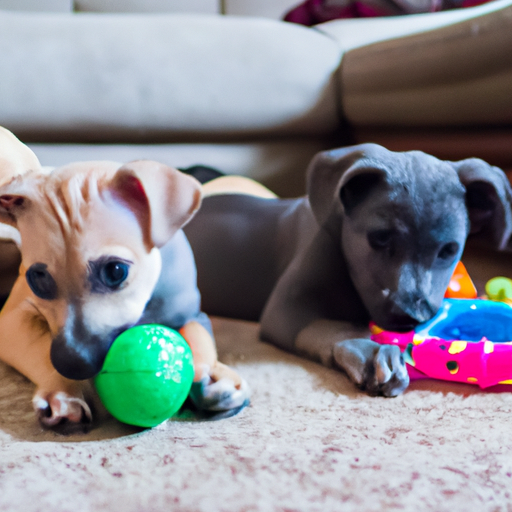Understanding Puppy Teething
When you bring home a new puppy, you’re signing up for a few sleepless nights, countless moments of joy and, of course, puppy teething. That’s right, much like human babies, puppies go through a teething phase. This process can be uncomfortable for your furry friend and can even be a testing time for you as a caregiver.
Teething usually starts when puppies are about 3-4 months old. It’s a necessary development stage where they lose their baby teeth and their adult teeth start to come in. This period lasts until they’re about 6-7 months old. During this time, you might notice your puppy chewing more than usual, a sign that they’re trying to alleviate the discomfort in their gums.
Signs of Puppy Teething
You may not always see your puppy lose its baby teeth, as they often fall out while the puppy is eating and are swallowed. However, there are some signs that your puppy is teething.
- Excessive Chewing: Puppies chew during teething to relieve the pain and pressure on their gums.
- Drooling and Drool Spots: If you notice wet spots around the house, your puppy might be teething.
- Missing Teeth: You might see gaps where your puppy’s baby teeth used to be.
How to Help Your Teething Puppy
Teething can cause your puppy discomfort, but there are ways you can help. Here are some tips to follow:
- Provide Chew Toys: Invest in a variety of chew toys. Specially designed teething toys can provide relief for sore gums.
- Use Cold Items: A chilled chew toy or a frozen carrot can provide soothing relief to your puppy’s sore gums.
- Puppy-Proof Your House: To protect your belongings from a teething puppy’s jaws, make sure to puppy-proof your house by removing items your puppy is likely to chew.
Choosing the Right Chew Toys
When selecting chew toys for your puppy, it’s important to consider the following:
- Size: The toy should be large enough that your puppy can’t swallow it or choke on it.
- Material: Avoid toys made from hard materials that could break your puppy’s teeth. Instead, opt for rubber or nylon toys.
| Chew Toy Material | Pros | Cons |
|---|---|---|
| Rubber | Durable, safe for chewing | Not as enticing as other materials |
| Nylon | Tough, long-lasting | Pieces can break off if too hard |
| Edible Chews | Enticing, can be consumed | Can cause stomach upset |
Regular Vet Check-ups
Regular vet visits are important during the teething phase to ensure that your puppy’s teeth are growing in correctly and to catch any potential dental problems early.
Training Your Puppy Not to Bite
While your puppy is teething, it’s also the perfect time to train them not to bite people. Start by letting your puppy know that biting is not acceptable behavior. If your puppy bites, say “no” firmly and replace your hand or foot with a chew toy.
Long-Term Dental Health
Once your puppy’s adult teeth have come in, it’s important to start thinking about long-term dental health. Regular brushing with dog-friendly toothpaste, professional cleanings, and a balanced diet can help keep your dog’s teeth healthy for years to come.
Frequently Asked Questions
Q: When do puppies start and stop teething?
A: Puppies usually start teething around 3-4 months old and finish by the time they are 6-7 months old.
Q: How can I soothe my teething puppy’s sore gums?
A: Providing chew toys, especially cold ones, can help soothe your puppy’s sore gums.
Q: What should I do if my puppy is teething and won’t eat?
A: If your puppy is refusing to eat because of teething pain, it’s best to consult your vet. They may be able to recommend a pain reliever or a special diet.
Q: How can I prevent my puppy from chewing on furniture and other items while teething?
A: Puppy-proofing your home and providing plenty of appropriate chew toys can help protect your belongings from a teething puppy.
By understanding the teething process and following these guidelines, you can help your puppy navigate this uncomfortable period with less stress and more comfort. Remember, every puppy is unique, and patience is key during this challenging stage.



